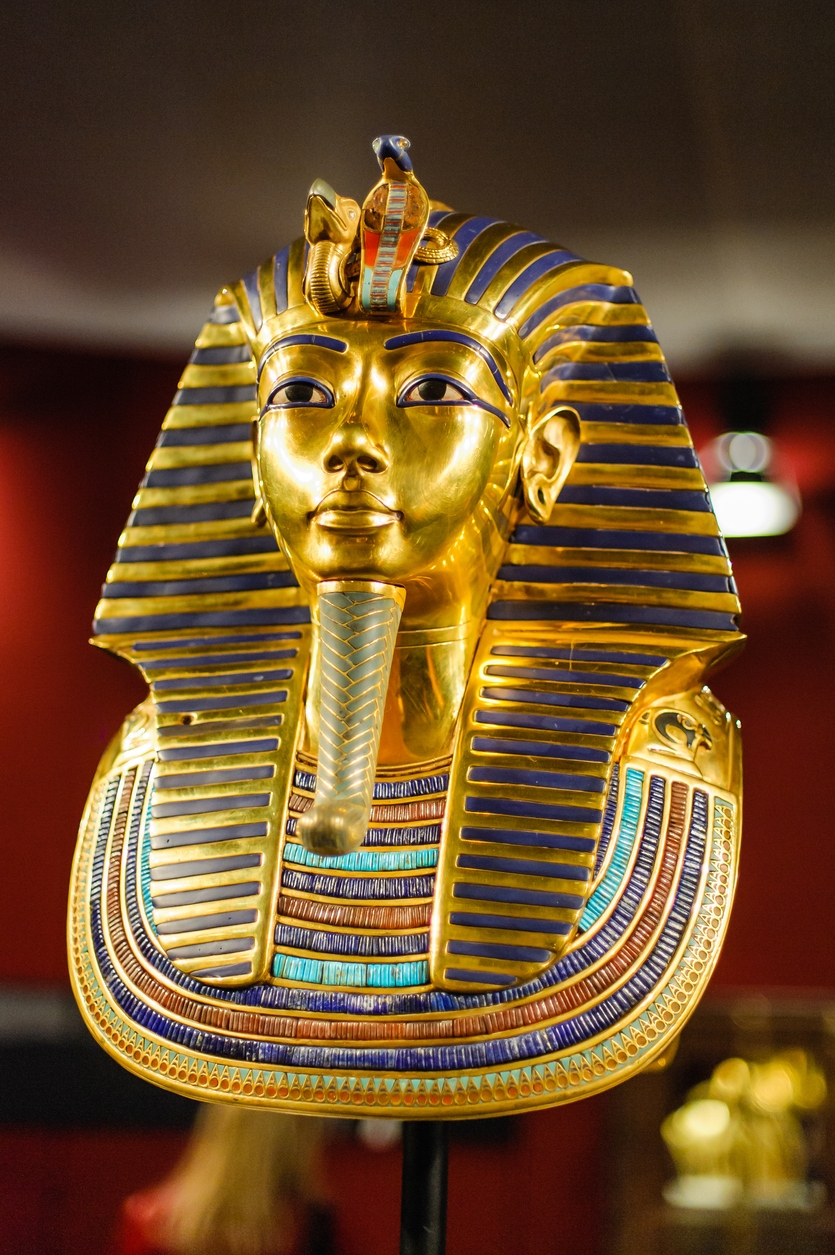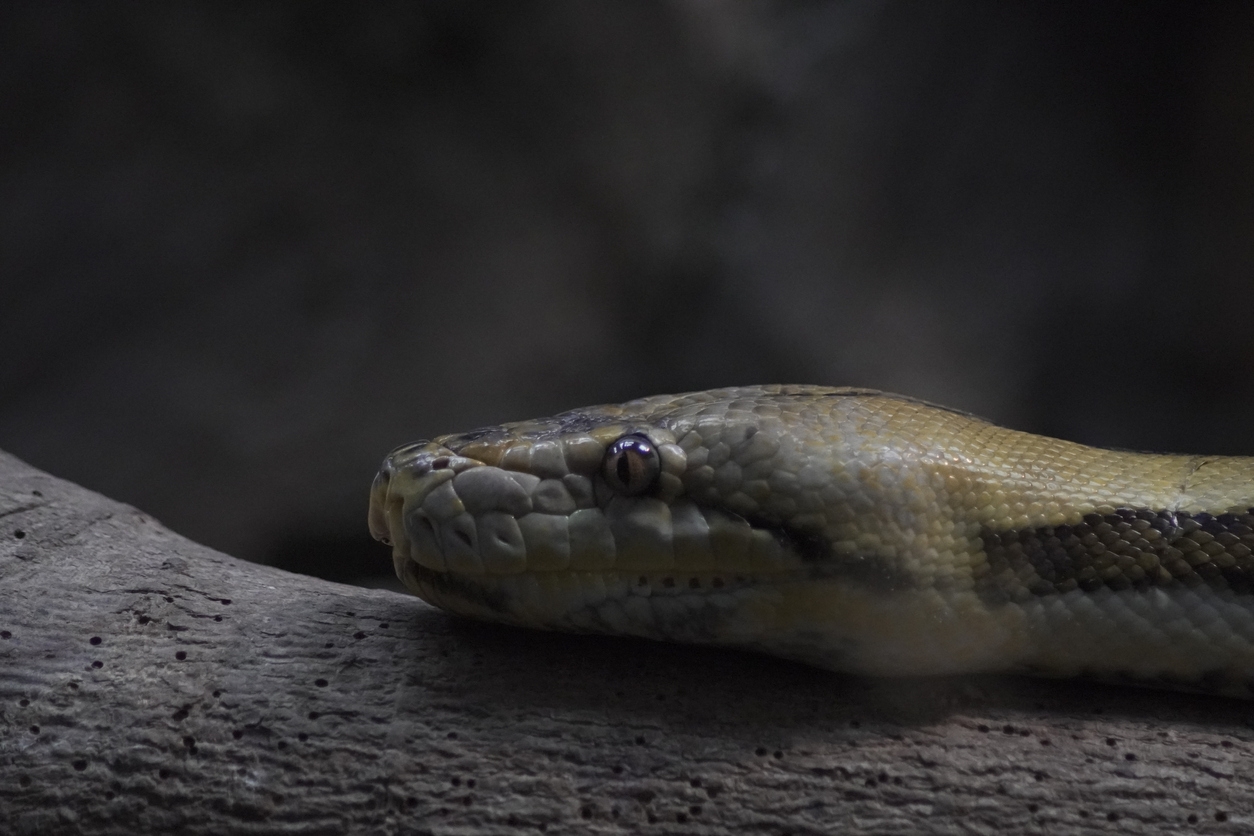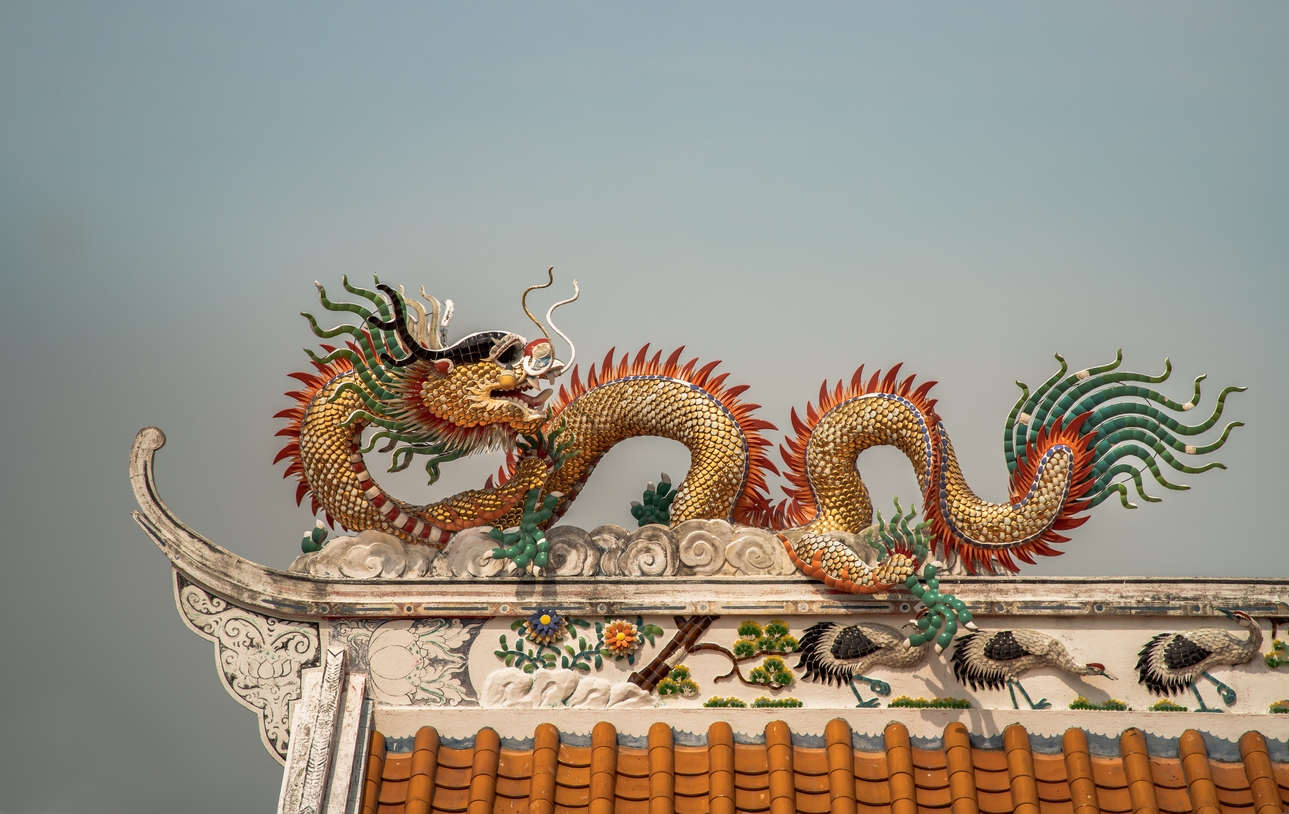Pervasive in human mythology, serpents encapsulate a complex duality that exceeds beyond cultural boundaries. These creatures are significant to the backgrounds of multiple societies for their sinuous form and somewhat bi-forked symbolism. They occupy a unique space in human consciousness as entities that are both feared and revered. Where some cultures associate them with danger and malevolence, others revere serpents as protectors, healers, and even creators. This bifurcation underscores the multifaceted nature of serpent symbolism in shaping cultural narratives.
In this post, we aim to unravel the enigma surrounding snakes and serpents in mythology. From ancient times to contemporary beliefs, snakes evoke various cultural connotations, becoming enduring symbols that go beyond geographical and temporal boundaries.
The Symbolism of Serpents
As symbols in cultural narratives, serpents carry a double meaning embodying both malevolent and benevolent attributes. [1] Below we cover both aspects, exploring their capacity as a threat and source of fear and their role as symbols of transformation and renewal.
Dual Symbolism
Diverse cultural mythologies highlight the contrasting qualities of serpent-like deities. In some traditions they embody protection, wisdom, and healing. While in others, they signify danger and malevolence. These contrasting views reflect the diverse interpretations and attitudes that societies hold toward these creatures. It mirrors the intricate mechanism of human perception that how it varies from one culture to another. [2]
Symbols of Transformation and Renewal
Symbolically, serpents convey a profound message through their ability to shed their skin. This shedding i.e. snakes slipping out of old skin, serves as a powerful image of transformation and renewal. [3]
Imagine a snake leaving behind its old, worn-out skin to emerge with a fresh one. Doesn’t it exhibit the idea that life, like the shedding of skin, is a continuous process of change and rejuvenation? The act symbolizes the cyclical nature of life, where old phases make way for new beginnings. Just as a snake discards its old skin, humans, too, can discard outdated ways and embrace growth and renewal. This universal motif of cyclical change reinforces the serpent’s role as a harbinger of change, offering cultures a symbol of renewal and the potential for rebirth.
Serpents as Symbols of Deceit and Danger
In various cultural stories, serpents are often portrayed as symbols carrying a weight of deceit and danger. [4] These narratives may stem from its stealthy movements and the hidden danger it may pose. Picture a snake, sleek and slithering, its hidden presence suggesting an element of secrecy and potential harm.
In many cultures the danger associated with serpents lies in their venomous nature. The striking speed of a snake and its venomous bite evoke a primal fear. This fear transforms the serpent into a symbol of potential harm and the unpredictable challenges one may encounter in life’s journey.
In stories and myths, the serpent often embodies cunning and trickery, symbolizing the unseen challenges that can catch one off guard. It becomes a cautionary symbol, urging vigilance in the face of the concealed dangers that life may present.
Serpent Deities in Different Cultures
In exploring serpent deities across global cultures, we encounter many mythological narratives. Despite their differences, all of these hold significance in shaping beliefs and symbolize different aspects within their respective traditions. Let’s look at everything you ever wanted to know about snakes:
| Cultural Context | Serpent Deities | Significance |
| Hinduism | Nagas | Big semi-divine serpents with human upper body, some can transform into full human form if they wish. |
| Shesha | The multi-headed serpent supporting cosmic realms | |
| Ancient Egypt | Uraeus Cobra | Worn as headdress, symbolizing divine authority and protection |
| Aztec Mythology | Quetzalcoatl | Feathered serpent god associated with wisdom and balance |
| Greek Mythology | Python | Defeated by Apollo, symbolizing triumph of light over darkness |
| Hydra | Multi-headed serpent overcome by heroes like Hercules |
Each of these serpent deities tells a special story in their own way, adding unique meanings to the cultures they belong to.
Hinduism: Nagas and the Serpent Deity Shesha
In Hindu stories, there are creatures called Nagas. These Nagas are like big serpents with a human upper body and serpentine lower half. They are serpent beings who live under the water and are considered as the protectors of the wells, springs, and rivers. [5]
One important Naga is Shesha. Shesha is like a super-strong serpent, also known as the Nagraja or King of snakes. People imagine Shesha as a multi-headed serpent holding up the cosmic world. [6] This symbolizes strength and balance in the big picture of Hindu beliefs. The word “Shesha” means everlasting which is why this serpent is believed to exist forever.
Ancient Egyptian Mythology: The Significance of the Cobra, Uraeus
In ancient Egypt, they had a special symbolic cobra called Uraeus. The name is derived from the Egyptian word “iaret” meaning risen one. It refers to a cobra rearing up in protection. The pharaohs wore Uraeus on their heads like a headdress. It wasn’t just for style, it meant something big.
The Uraeus is a symbol of an Egyptian Deity Wadjet. Often depicted as one of the most dangerous snakes in the world, cobra, she was the protector of lower Egypt. Having Uraeus on their heads showed everyone that the pharaoh was really strong and was protected by the divine. The cobra was a symbol of guarding the ruler and having authority from the divine. The sign symbolizes water in traditions related to purification. [7]
Aztec Mythology: Quetzalcoatl, the Feathered Serpent God
In Aztec stories, we come across a special serpentine god named Quetzalcoatl. Imagine Quetzalcoatl like a mix of a serpent and a bird, with beautiful feathers. This feathered serpent god is believed to have brought wisdom, helped with farming, and taught people how to live together in civilization. [8] Quetzalcoatl is like a friend who connects the earth and the sky, making sure everything is in harmony. People in Aztec times respected and admired Quetzalcoatl for these helpful qualities, and his stories became an important part of their beliefs.
Greek Mythology: The Role of Serpents, such as the Python and the Hydra
In ancient Greek stories, there are more than one special serpents with important roles. One of them was Python. Python was a giant serpent in Greek tales. Apollo, a powerful god, fought and defeated Python. [9] This battle was like a story of light winning over darkness. Apollo’s victory showed that good things could overcome challenges.
Then there’s Hydra. It was another serpent in Greek myths, but had many heads. It was stationed to protect one of the entrances to the Underworld, the kingdom of Hades. [10] Hercules, a strong hero, faced the Hydra as one of his challenges. Each time Hercules cut off one head, two more grew back. It was a tough fight, but Hercules managed to defeat the Hydra by getting help from others.
To summarize, in Greek mythology, serpents teach us about facing tough situations, the triumph of good over bad, and the strength that comes from teamwork.
Serpents as Protectors and Healers
Across various mythologies, serpents emerge as multifaceted symbols, embodying roles as protectors and healers. This reveals a multifaceted relationship between humans and these enigmatic creatures.
Protectors of Sacred Places
Serpents are depicted as guardians of sacred places in numerous myths. In such narratives, they serve as vigilant protectors, embodying a sense of guardianship over revered spaces. An example can be found in Hindu mythology, where Nagas safeguard sacred rivers and mountains, symbolizing their role as custodians of revered sites. [5]
The symbolism here suggests a harmonious coexistence where serpents are entrusted with safeguarding the sanctity of places deemed sacred in cultural and spiritual contexts.
Symbols of Healing and Wisdom
In different mythologies, serpents are also revered as symbols of healing and wisdom. In such traditions their shedding skin becomes a metaphor for renewal, reflecting the transformative power of healing. The phenomenon represents the shedding of ailments and the restoration of well-being.
Serpents, in this context, represent a source of ancient wisdom, guiding individuals on paths towards physical and spiritual well-being. The serpent coiled around the staff of Asclepius in Greek mythology is an iconic representation of healing and medical wisdom. [11]
Serpent Imagery in Medicinal Folklore
The use of serpent imagery in medicinal folklore further underscores the belief in their healing properties. From ancient times, various cultures have integrated serpent symbolism into medicinal practices. This inclusion ranges from serpent motifs in traditional healing rituals to the symbolic representation of serpents in medicinal folklore as conduits of vitality and renewal.
For example, in ancient Chinese folklore, the shedding of a snake’s skin is linked to the renewal of health. Similarly, in traditional Ayurvedic medicine, the serpent is a symbol of rejuvenation and vitality, reflecting its role in promoting well-being. [12]
Serpents in Folklore and Legends
Serpents are portrayed as central figures in legends that span cultures. Some major roles they play include guardianship of hidden treasures. For instance, they are frequently depicted as guardians of hidden treasures, adding an element of mystique to their narratives. In Norse mythology, the serpent Jormungandr encircles the world, guarding precious secrets. Similarly, in Hindu mythology, the serpent Adishesha safeguards the cosmic treasures of the gods. And in Japanese folklore, the dragon-serpent Orochi is a powerful symbol, defeated by the heroic Susanoo. Such tales contribute to the rich tapestry of cultural storytelling, where serpents embody both perilous challenges and opportunities for triumph.
Cross-Cultural Comparison
Cross-cultural exploration reveals common threads and unique variations in serpent legends.
Chinese Dragon vs. Norse Midgard Serpent
| Chinese Dragon | Norse Midgard Serpent |
| Revered symbol of power, wisdom, and fortune | Represents chaos, large enough to encircle the world |
The Chinese Dragon is revered in Chinese mythology. It is a benevolent and auspicious symbol associated with power, wisdom, and good fortune. [13]
In Norse mythology, the Norse Midgard Serpent (Jormungandr) is a colossal serpent that can create tidal waves and crush mountains. In legends it embodies chaos, representing a force to be reckoned with. [14]
Greek Python vs. Hindu Naga
| Greek Python | Hindu Naga |
| Monstrous serpent slain by Apollo | Serpent deities, protectors and possessors |
In Greek mythology, Python is a monstrous serpent slain by Apollo, symbolizing the triumph of light over darkness.
In contrast, Nagas in Hindu mythology are serpent deities, often portrayed as protectors and possessors of cosmic treasures.
Aztec Quetzalcoatl vs. Egyptian Uraeus
| Aztec Quetzalcoatl | Egyptian Uraeus |
| Feathered serpent god, associated with wisdom | Cobra symbol, worn as protective headdress by pharaohs |
As mentioned above, Quetzalcoatl is a feathered serpent god in Aztec mythology, associated with wisdom and civilization.
In ancient Egypt, the Uraeus, a cobra symbol, represents divine authority and is worn as a protective headdress by pharaohs.
These cross-cultural comparisons highlight both shared archetypes and unique cultural interpretations of serpents. Whether revered as symbols of wisdom and protection or feared as embodiments of chaos, serpents transcend geographical boundaries, leaving an indelible mark on the mythologies of diverse civilizations.
Conclusion
In global mythology, serpents emerge as enduring symbols with diverse roles. From protectors and healers to guardians of hidden treasures, serpent legends resonate across cultures. Our exploration of various cultural narratives and their cross examination explored both the common and unique interpretation of these amazing creatures. Their symbolic significance as protectors, healers, and guardians of hidden treasures underscores their enduring presence in the collective mythological heritage of humanity.





